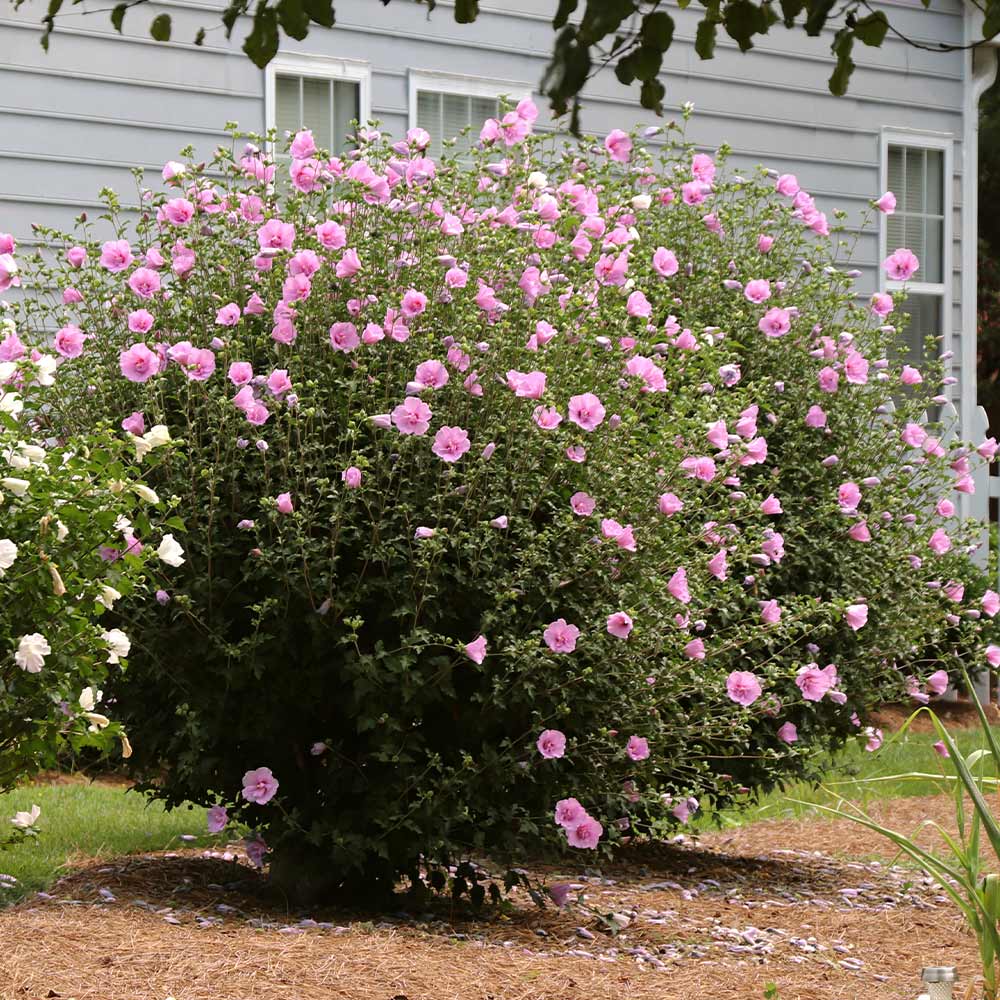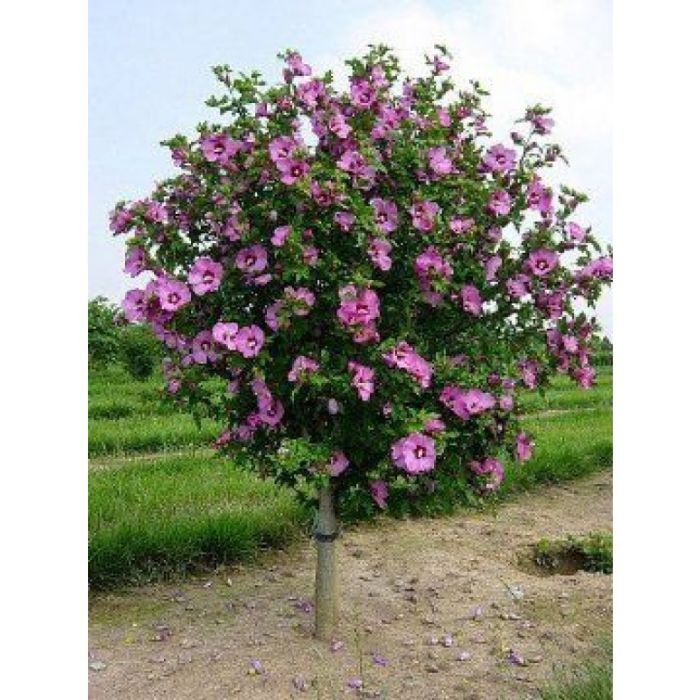Aphrodite's Kiss: The Bewitching Beauty Of The Rose Of Sharon
Aphrodite's Kiss: The Bewitching Beauty of the Rose of Sharon
The rose of Sharon is a beautiful and fragrant flower that has been prized for centuries for its beauty and symbolism. It is also known by many other names, including the hibiscus syriacus, althea, and rosemallow.
The rose of Sharon is native to Asia and the Middle East, but it is now grown all over the world. It is a deciduous shrub or small tree that can grow up to 10 feet tall. The leaves are large and oval, and they are often a deep green color.
The flowers of the rose of Sharon are the most striking feature of the plant. They are large and showy, and they come in a wide variety of colors, including white, pink, red, purple, and blue. The flowers bloom in the summer and fall, and they are a popular choice for cut flowers.
The rose of Sharon is not only beautiful, but it is also a valuable medicinal plant. The flowers and leaves of the plant have been used to treat a variety of ailments, including coughs, colds, and sore throats. The plant is also said to have anti-inflammatory and antioxidant properties.
In addition to its beauty and medicinal properties, the rose of Sharon is also a symbol of love and beauty. In the Bible, the rose of Sharon is mentioned as a symbol of the beauty of the Promised Land. The flower is also associated with Aphrodite, the Greek goddess of love and beauty.
The rose of Sharon is a truly bewitching flower that is sure to add beauty and fragrance to any garden. If you are looking for a plant that is both beautiful and meaningful, the rose of Sharon is a great choice.
[MAIN CONTENT]
History and Symbolism
The rose of Sharon has a long and rich history. It is mentioned in the Bible as a symbol of the Promised Land, and it has been used in traditional medicine for centuries. The flower is also associated with Aphrodite, the Greek goddess of love and beauty.
The rose of Sharon was first introduced to Europe in the 16th century, and it quickly became popular. The flower was prized for its beauty and its medicinal properties. In the 18th century, the rose of Sharon was introduced to North America, and it has been a popular garden plant ever since.
The rose of Sharon is a symbol of love, beauty, and the Promised Land. It is often used in wedding bouquets and other floral arrangements. The flower is also a popular choice for tattoos and other body art.
Growing and Care
The rose of Sharon is a relatively easy plant to grow. It prefers full sun and well-drained soil. The plant is drought tolerant, but it will do best with regular watering. The rose of Sharon is not very susceptible to pests or diseases.
The rose of Sharon can be propagated from seed or from cuttings. Seedlings will take about two years to reach flowering size. Cuttings can be taken in the spring or summer.
The rose of Sharon is a hardy plant that can withstand cold winters. However, in colder climates, the plant may need to be protected from frost.
Pests and Diseases
The rose of Sharon is not very susceptible to pests or diseases. However, the plant may be attacked by aphids, spider mites, or scale insects. These pests can be controlled with insecticidal soap or neem oil.
The rose of Sharon may also be susceptible to powdery mildew or rust. These diseases can be prevented by watering the plant in the morning and avoiding overhead watering. If the plant does develop a disease, it can be treated with a fungicide.
Harvesting and Preserving
The flowers of the rose of Sharon can be harvested for fresh flowers or for drying. To dry the flowers, simply cut them when they are fully open and hang them upside down in a cool, dark place. The flowers will be dry in about two weeks.
The flowers of the rose of Sharon can also be used to make tea. To make tea, simply steep the flowers in hot water for a few minutes. The tea has a mild, sweet flavor.
The rose of Sharon is a beautiful and versatile plant that can be enjoyed in many ways. Whether you grow it in your garden, use it in floral arrangements, or make tea from its flowers, the rose of Sharon is sure to add beauty and fragrance to your life.
Aphrodite Rose of Sharon is a beautiful and fragrant shrub that is native to the Mediterranean region. It is known for its deep pink flowers, which bloom in the summer. The flowers are said to smell like roses, and they are often used in perfumes and other fragrances.
Aphrodite Rose of Sharon is a relatively easy plant to care for. It prefers full sun and well-drained soil. It is drought-tolerant, but it will do best if it is watered regularly during the summer months.
If you are interested in learning more about Aphrodite Rose of Sharon, I recommend visiting Garden Wiki. This website has a wealth of information about the plant, including its history, cultivation, and uses.
FAQ of aphrodite rose of sharon
Question 1: How many petals does an Aphrodite rose of Sharon have?
Answer: Aphrodite rose of Sharon has 5 petals, just like all other rose of Sharon plants. The flowers are typically 2-4 inches wide and have a tropical appearance.
Question 2: What is the meaning of the name Aphrodite rose of Sharon?
Answer: The name Aphrodite rose of Sharon is a reference to the Greek goddess of love and beauty, Aphrodite. The plant is said to have been named after Aphrodite because of its beautiful flowers.
Question 3: What are the care requirements for Aphrodite rose of Sharon?
Answer: Aphrodite rose of Sharon is a relatively easy plant to care for. It prefers full sun and well-draining soil. Water the plant regularly, especially during the summer months. Fertilize the plant once a month during the spring and summer.
Question 4: What are some common pests and diseases that affect Aphrodite rose of Sharon?
Answer: Aphrodite rose of Sharon is susceptible to a few pests and diseases, including aphids, spider mites, and powdery mildew. Aphids and spider mites can be controlled with insecticidal soap or neem oil. Powdery mildew can be prevented by watering the plant in the morning so that the leaves have a chance to dry before nightfall.
Question 5: How can I propagate Aphrodite rose of Sharon?
Answer: Aphrodite rose of Sharon can be propagated by seed, cuttings, or division. Seed propagation is the most common method. Sow the seeds in the spring in a well-draining potting mix. Keep the soil moist and the seedlings warm. Cutting propagation is also a relatively easy method. Take 4-6 inch cuttings in the spring or summer. Dip the cuttings in rooting hormone and plant them in a well-draining potting mix. Keep the cuttings moist and warm until they root. Division is the least common method of propagation, but it is also the most successful. In the spring, divide the plant by carefully digging it up and separating the roots. Plant the divisions in a well-draining potting mix.
Image of aphrodite rose of sharon
5 different images of "Aphrodite Rose of Sharon" from Pinterest:
- Image 1: A close-up of a single Aphrodite Rose of Sharon flower in full bloom. The flower is a deep, vibrant pink color with a white center.

- Image 2: A full shot of an Aphrodite Rose of Sharon shrub in bloom. The shrub is covered in clusters of pink flowers.
- Image 3: A row of Aphrodite Rose of Sharon shrubs in bloom. The shrubs are planted in a garden and are surrounded by other flowers and greenery.
- Image 4: A Aphrodite Rose of Sharon shrub in bloom against a blue sky. The shrub is in full bloom and the flowers are a vibrant pink color.
- Image 5: A bouquet of Aphrodite Rose of Sharon flowers. The bouquet is made up of several different flowers, all in shades of pink.

Post a Comment for "Aphrodite's Kiss: The Bewitching Beauty Of The Rose Of Sharon"